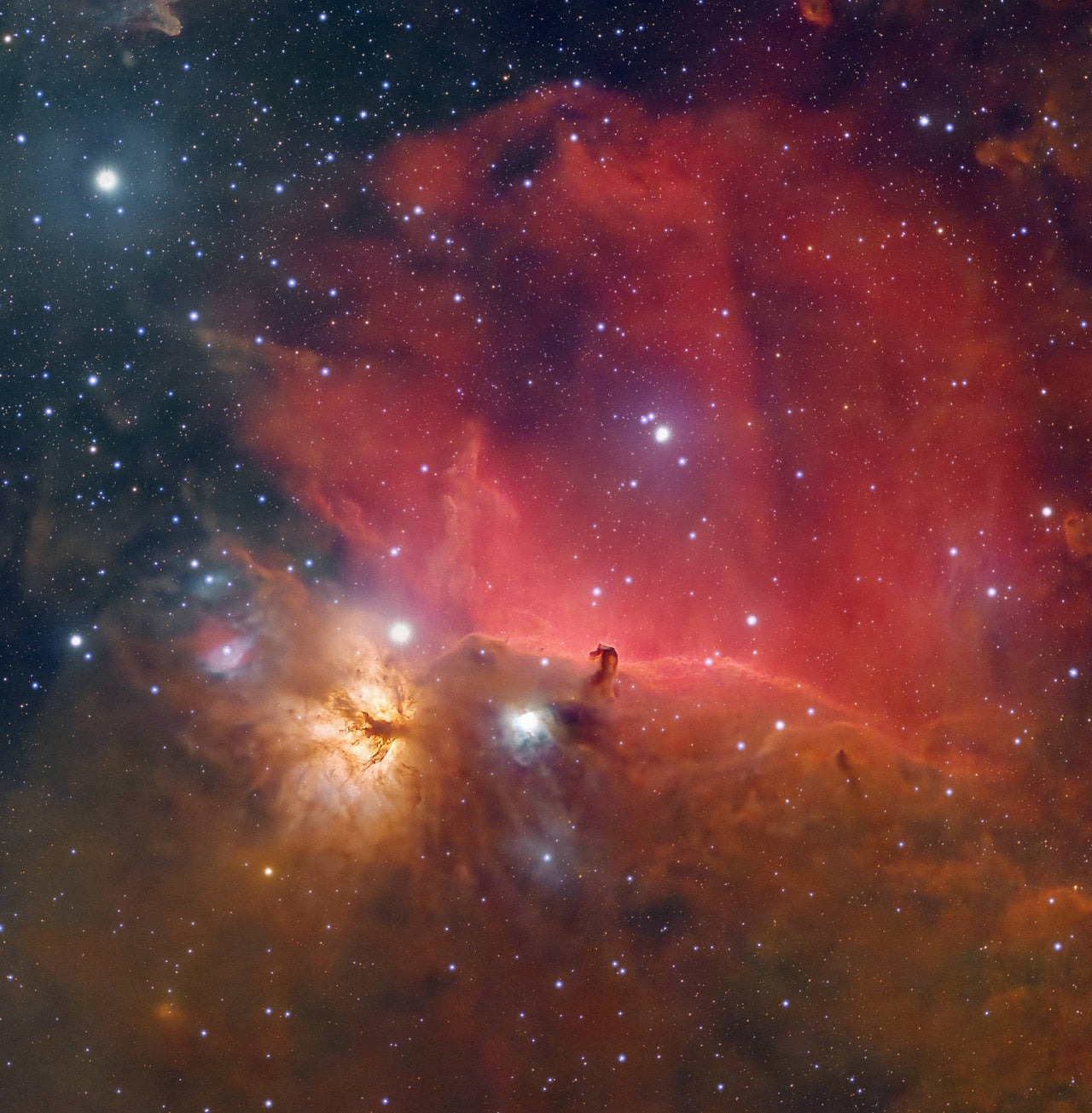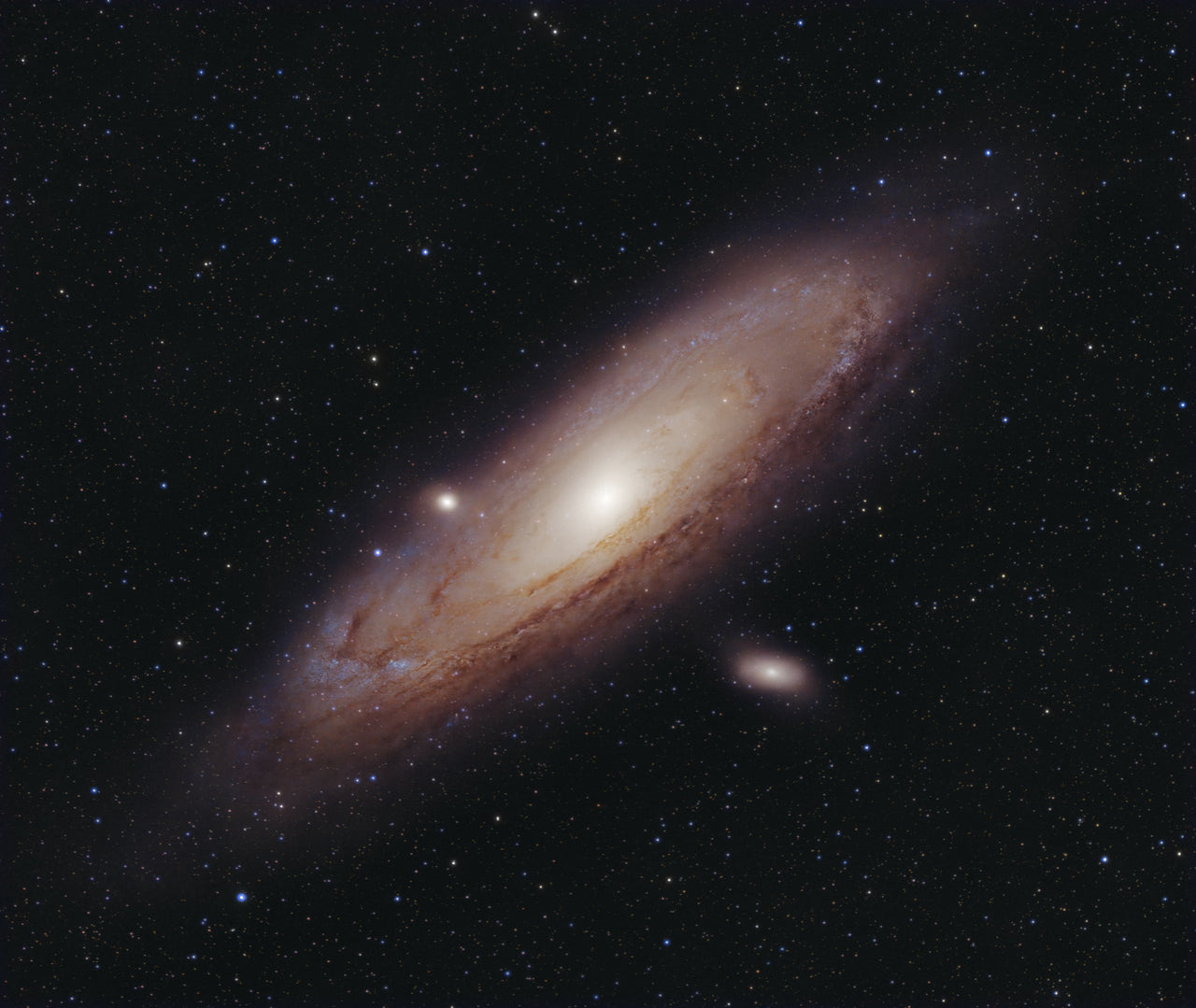
The March 29, 2025, Partial Solar Eclipse
26 Mar. 2025
On March 29, 2025, a solar eclipse will take place. The last major total solar eclipse, on April 8, 2024, was successfully observed by thousands of Vespera and Hestia users worldwide (watch our collaboration vlog with StarTalk and Neil deGrasse Tyson).
This time, however, the eclipse will be partial. While it won’t be as dramatic as a total eclipse, it remains a fascinating celestial event. The eclipse will be visible from the northeastern United States, eastern Canada, and parts of western and northwestern Europe. Residents in these regions will be able to safely observe the eclipse using Vespera and Hestia, provided they use the essential solar filter.
In this article, you'll find everything you need to know to witness this astronomical phenomenon.

Image : Neil DeGrasse Tyson observing the 2024 solar eclipse with Vespera.
What Is a Solar Eclipse?
The Moon orbits the Earth in just over 27 days. Under specific conditions, the Sun, Moon, and Earth align perfectly, with the Moon positioned between the Sun and our planet. This alignment causes the Moon to block the Sun’s light, creating a solar eclipse.
- When the alignment is perfect, the Moon completely covers the Sun, resulting in a total eclipse.
- If the Moon only partially covers the Sun, a partial eclipse occurs, leaving part of the Sun still visible.
To better understand why solar eclipses happen and how often they occur, visit the dedicated page in our 2024 Eclipse Guide.
The March 29, 2025, eclipse will be partial. In western Canada, where the eclipse will be most pronounced, the Moon will obscure up to 90% of the Sun’s surface, leaving only a thin crescent of sunlight visible.
What Can You Observe During a Partial Solar Eclipse?
Unlike a total eclipse, a partial eclipse does not noticeably dim the daylight. If you are unaware that an eclipse is happening, you might not even notice the event.
Video : the partial phase of an eclipse captured with Vespera. Credit : Ashalom.
However, with proper solar filters, you can safely observe the phenomenon: the Moon will appear to "nibble" at the Sun, gradually transforming it into a crescent shape.
How to Safely Observe the Partial Eclipse
Even when the Sun is partially eclipsed, never look directly at it through any optical instrument without a proper solar filter, as this can cause permanent eye damage.
Vespera and Hestia allow for safe, indirect observation and are compatible with certified solar filters. The filter must remain in place throughout the entire event.
⚠️ Never remove the solar filter from Vespera or Hestia while observing the eclipse!
To observe the eclipse, ensure that the sky is clear enough and the Sun is visible. A thin veil of clouds won’t necessarily hinder observation.
Observing the Eclipse with Vespera
To observe the eclipse with Vespera, follow these steps:
1. Use your smart telescope at least once at night before attempting solar observation.
2. In the Singularity app, select the observatory corresponding to your location (or create one if it doesn’t exist).
3. Power on your smart telescope and connect it to the Singularity app.
4. From the Space Center, select Solar Mode.
5. The telescope arm will move to allow you to attach the solar filter.
6. Once the filter is in place, confirm the installation.
7. Align the telescope with the Sun as instructed by Singularity, then validate the alignment.
8. Vespera will locate the Sun and display the live image.
Observing the Eclipse with Hestia
Check out our complete guide on how to observe eclipses with Hestia, including setup instructions, photography tips, and timelapse techniques.
Since this is a partial eclipse, there will be no total phase—the solar filter must remain in place for the entire observation.
Where and when to see the March 29, 2025, Partial Solar Eclipse
United States
The eclipse will be visible from:
Maine, Vermont, New Hampshire, Connecticut, New York, New Jersey, Delaware, Maryland, and Pennsylvania.
- Best viewing conditions: Maine, where up to 85% of the Sun will be obscured.
- Lowest coverage: Pennsylvania, where the Moon will cover only 20% of the Sun.
- The eclipse will already be in progress at sunrise, meaning you’ll need an unobstructed eastern horizon to observe it.
Canada
The eclipse will be visible from:
Newfoundland, Nova Scotia, New Brunswick, Quebec, Nunavut, and the far eastern edge of Ontario.
- Best viewing conditions: The farther east, the better. In some areas, the Moon will cover over 90% of the Sun.
- The eclipse will already be underway at sunrise, so an open eastern horizon is essential.
Europe
The eclipse will be visible across:
- Scandinavia (18% obscuration in Finland, up to 38% in Norway)
- Germany (17%)
- France (10–30%, with Brittany offering the best view)
- Spain & Portugal (13–30%, with better visibility in the west)
- United Kingdom (30–40%)
The eclipse will occur around midday.
The eclipse will also be visible in Iceland and Greenland.
Summary
The eclipse will be most pronounced in eastern Canada and the northeastern U.S, but it will also be more difficult to observe since the Sun will be very low on the horizon.
Western Europe offers easier conditions: The eclipse will be less pronounced, but the Sun will be higher in the sky, making observation simpler.
Products mentioned in the article






Best seller
€349
€299
Your Questions Answered





€1.690
€1.590
Vespera II is THE observation station, the perfect combination of telescope and camera. Smart and fully automated, the wonders of the Universe are now accessible to all with ease. Explore and observe the night sky, take your own photos of celestial objects, learn about the Cosmos, and share your discoveries in one place.
Vespera’s companion app offers educational content making the experience of observation more interactive and exciting. You can now discover the many secrets and stories that make the Universe so fascinating.
Vespera II redesigns the experience of observation. Watching the stars through our mobile app allows you to fly accross the vastness of the Universe all together with your friends or family. Connect up to 5 mobile devices to your station with the multi-user mode, then share your discoveries in Ultra-HD on social networks. You can now share your passion with everyone.
Make visible what’s invisible to our eyes with Vespera’s image live stacking technology. Super easy to use, just set up the tripod using the adjustable legs, and press the button. Let Vespera come to life and calibrate itself through your devices’ GPS and Star Field Recognition technology. Using the app, select the object you want to observe, and Vespera will point and track it.
- Auto-initialization: Vespera uses your mobile’s GPS, star pattern recognition and astrometry to calibrate itself. Set up your device and get it ready automatically in less than 5 minutes.
- Auto-alignment: The observation station embarks Go-To technology. Select a target in the app or enter any celestial coordinates, it will move and point to them automatically.
- Auto-tracking: Driven by a motor and controlled by an embedded computer, Vespera automatically tracks your stellar object, compensating Earth’s rotation.
- Auto-focus: Vaonis products are the only telescopes on the market to incorporate autofocus. No longer any need for manual intervention to ensure the sharpness of your photos.
Quadruplet Apochromatic Refractor
Vaonis has designed a unique quadruplet lens of 50mm, formed by 2 groups of 2 lenses made with lanthanum glass. Vespera optics is one of the most accurate and powerful optical designs on the market with minimal distorsion, chromatic aberration or astigmatism.
High sensitivity Sony sensor
Vespera uses one the lastest Sony sensors developed for extreme low light. Its back-illuminated CMOS sensor offers a 1/2.8 format and a 2.9um pixel size. Vaonis also developed their own electronic card to make sure that heat management stays optimal. A hot sensor means a lot of defects, so the sensor board is designed to dissipate the maximum amount of heat.
What's in the box














